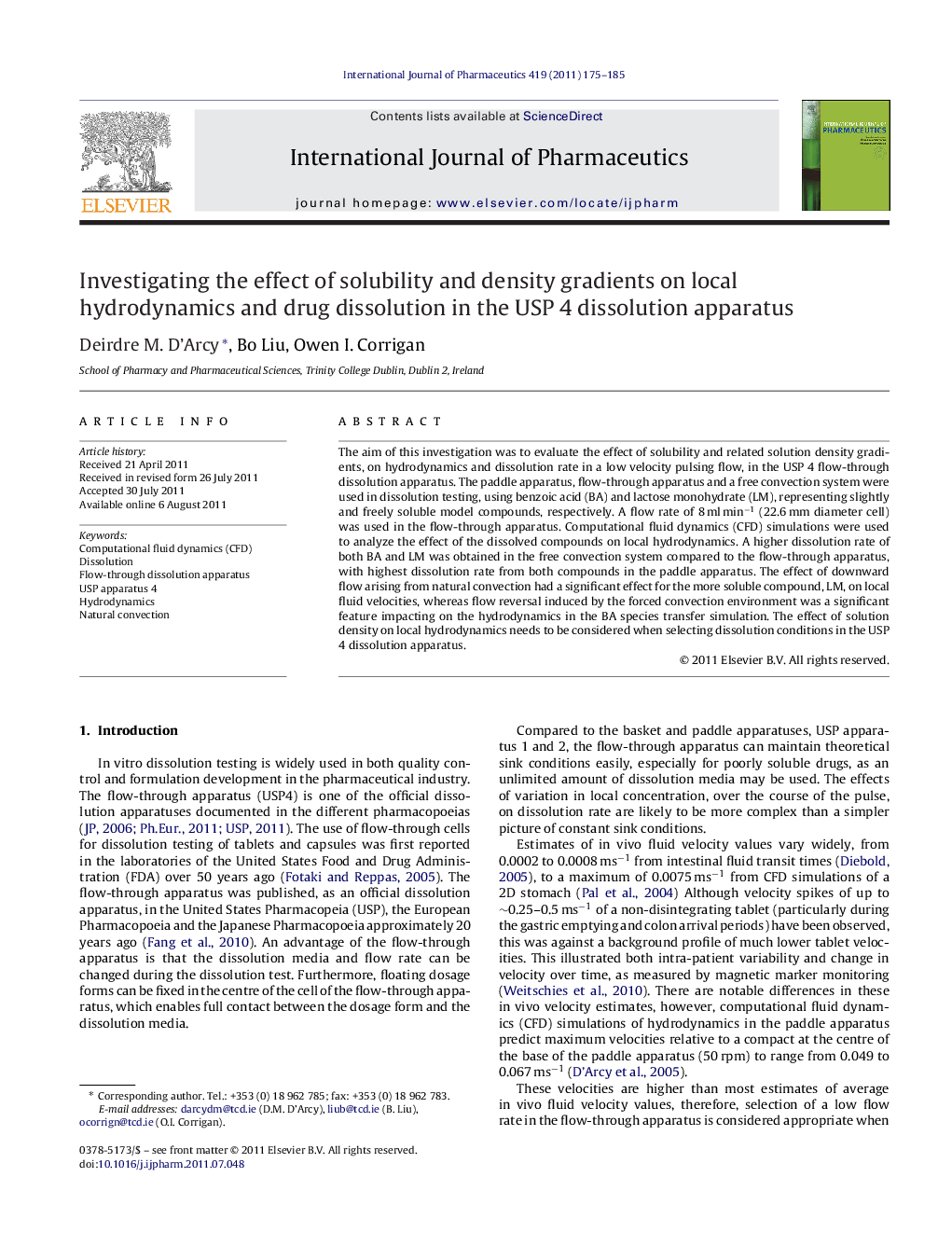| Article ID | Journal | Published Year | Pages | File Type |
|---|---|---|---|---|
| 2503300 | International Journal of Pharmaceutics | 2011 | 11 Pages |
The aim of this investigation was to evaluate the effect of solubility and related solution density gradients, on hydrodynamics and dissolution rate in a low velocity pulsing flow, in the USP 4 flow-through dissolution apparatus. The paddle apparatus, flow-through apparatus and a free convection system were used in dissolution testing, using benzoic acid (BA) and lactose monohydrate (LM), representing slightly and freely soluble model compounds, respectively. A flow rate of 8 ml min−1 (22.6 mm diameter cell) was used in the flow-through apparatus. Computational fluid dynamics (CFD) simulations were used to analyze the effect of the dissolved compounds on local hydrodynamics. A higher dissolution rate of both BA and LM was obtained in the free convection system compared to the flow-through apparatus, with highest dissolution rate from both compounds in the paddle apparatus. The effect of downward flow arising from natural convection had a significant effect for the more soluble compound, LM, on local fluid velocities, whereas flow reversal induced by the forced convection environment was a significant feature impacting on the hydrodynamics in the BA species transfer simulation. The effect of solution density on local hydrodynamics needs to be considered when selecting dissolution conditions in the USP 4 dissolution apparatus.
Graphical abstractFigure optionsDownload full-size imageDownload as PowerPoint slide
